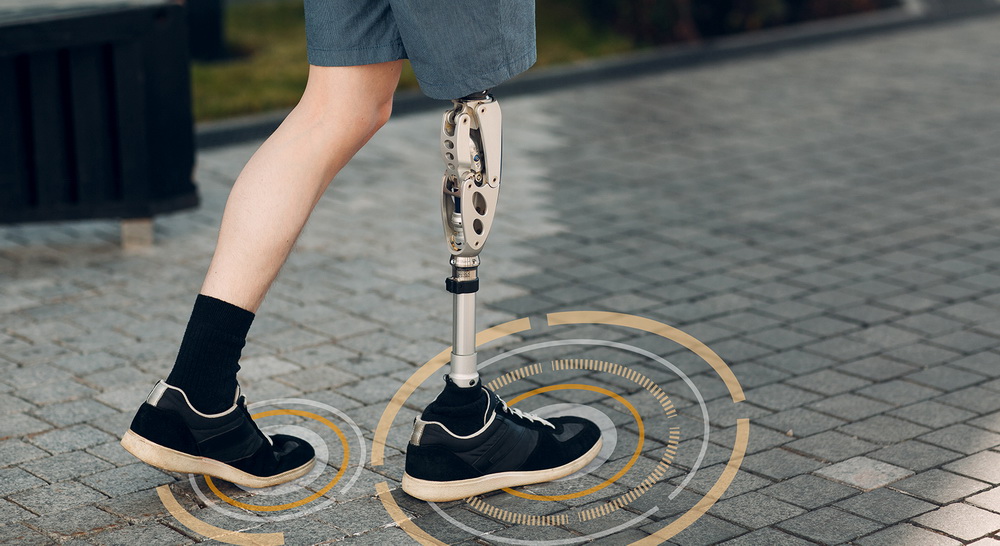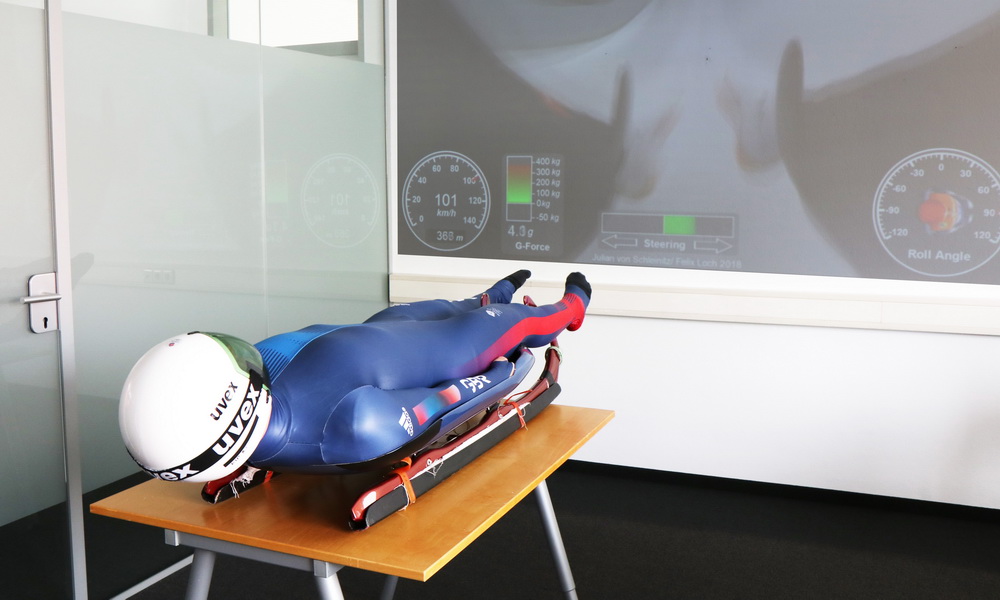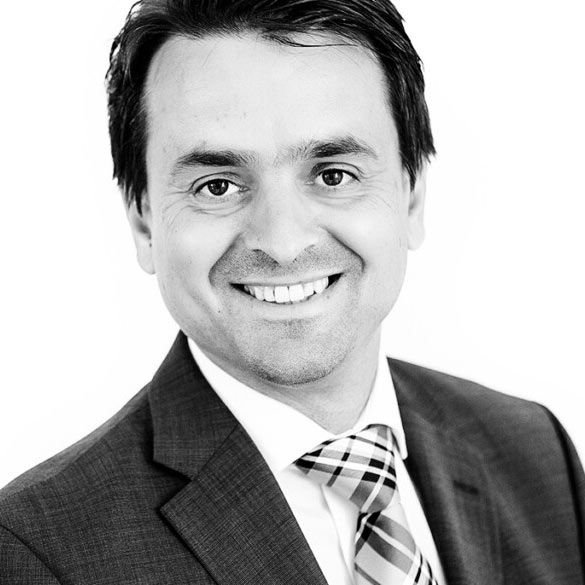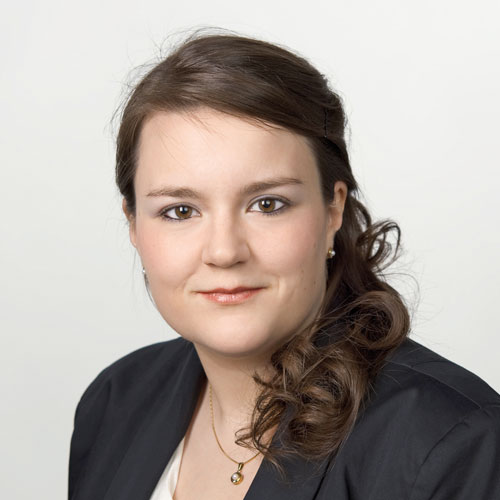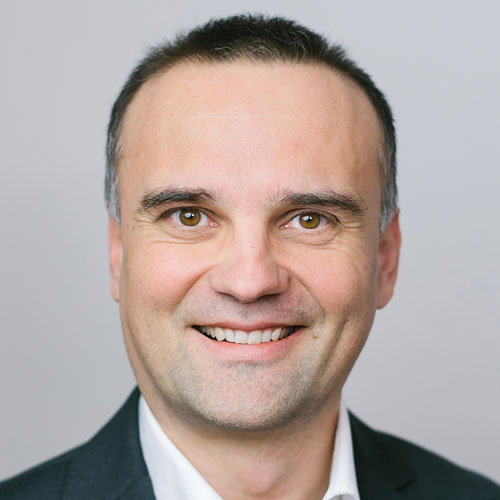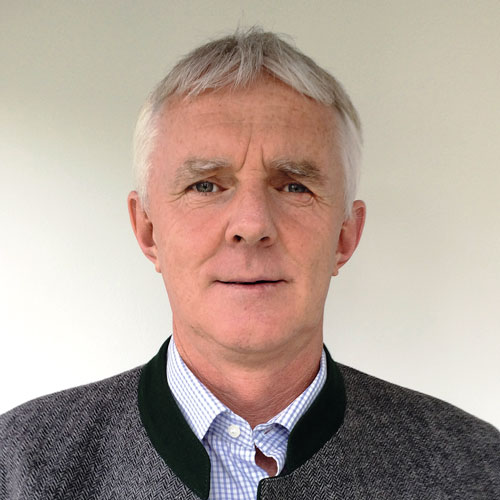Spatiotemporal gait parameters provide information about the symmetry of the human gait pattern. Especially for people with prosthetic legs, a symmetrical gait is a great challenge because important sensory perceptions of the amputated foot are missing. On behalf of the prosthesis manufacturer Saphenus Medical Technology, Salzburg Research developed a mobile system to record the contact time difference during everyday gait in order to support prosthesis wearers in rehabilitation.
Challenge
Leg amputees are accompanied in their rehabilitation by regular clinical gait tests. This involves analysing gait in a controlled environment using stationary force plates or mats. Medical advice is therefore based on the data collected from a few steps, which usually deviate from the everyday gait, as controlled environments can change the gait pattern. Continuous monitoring of gait in everyday life is not yet possible.
Solution
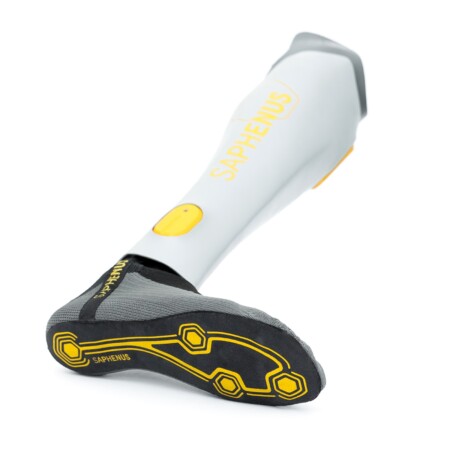
The Suralis feedback system – a “feeling prosthesis” – by Saphenus Medical Technology enables the acquisition of gait data through movement and pressure sensors with the help of a pressure measuring sock worn on the prosthesis and an inertial measurement unit (IMU).
Salzburg Research was commissioned to develop an algorithm for detecting the ground contact time difference between the prosthesis and the healthy foot for this system and to test it in a study. The contact time difference is considered a decisive gait parameter in the analysis of a symmetrical gait pattern.
Benefit
With the study for Saphenus Medical Technology, Salzburg Research proved that the developed system provides valid data for the care of leg amputees in rehabilitation. The system further developed by Salzburg Research enables the analysis of the contact time difference as a decisive spatio-temporal gait parameter on the basis of steps recorded in everyday life. Thus, medical advice on rehabilitation can be given based on a much larger and, above all, everyday database. A visit to the clinic will no longer be necessary for prosthesis wearers in the future, as the data can be transmitted remotely to the attending physician after further developments. The doctor thus has a continuous insight into the patient’s rehabilitation process and can quickly take countermeasures in the event of possible abnormal developments in the gait pattern.
The success rate of the rehabilitation of prosthesis wearers can be increased, as they are more likely to be able to relearn a natural gait pattern due to the increased medical care.
Publication: Severin Bernhart, Stefan Kranzinger, Alexander Berger, Gerfried Peternell (2022): Ground Contact Time Estimating Wearable Sensor to Measure Spatio-Temporal Aspects of Gait. In: Sensors 2022, 22, 3132. https://www.doi.org/10.3390/s22093132
More information:

